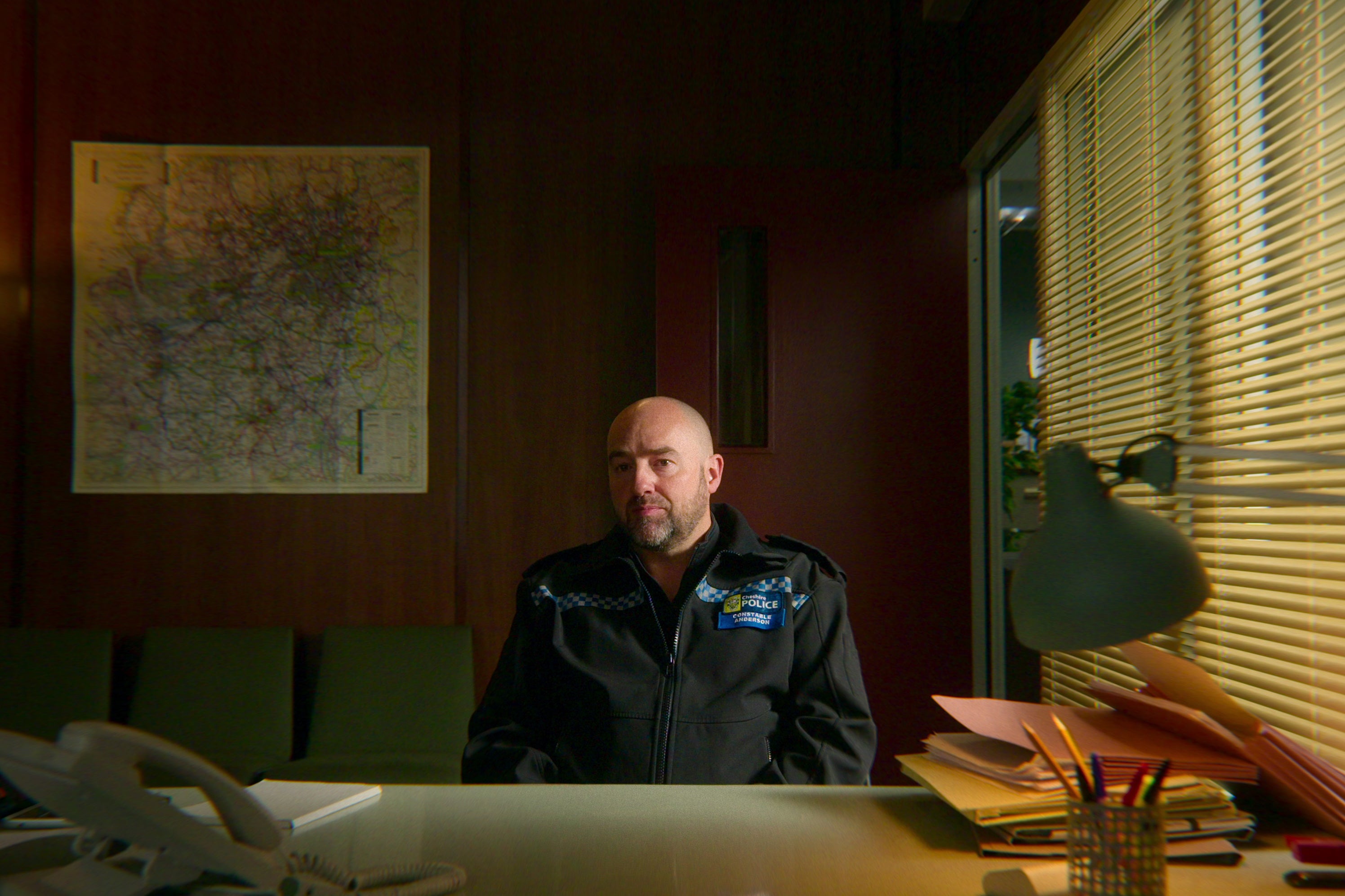
Can I Tell You a Secret? The terrifying true story behind Netflix’s new cyber stalker documentary
I’m never using social media again
Netflix’s new true-crime documentary Can I Tell You a Secret? was finally released today and the terrifying story about the UK’s most prolific serial cyber stalker – Matthew Hardy – is already shocking viewers with its content. Each episode tells the stories of women who were targeted by Hardy’s harassment, with the titular line: “Can I tell you a secret?”
So, in case you’re intrigued by the horrifying cyberstalking ordeal these women went through, Hardy’s long history of cyber stalking, and the Guardian investigation which followed and led to the Netflix show, here’s everything you need to know about the chilling true story behind Netflix’s new cyber stalker documentary Can I Tell You a Secret:
Matthew Hardy started cyber stalking from a young age and would harass his classmates when he was in secondary school

Credit: Netflix
Matthew Hardy is now 32 but started harassing his classmates online when he was in secondary school back in the late 2000s. At the time, Facebook was just gaining popularity and, despite being given two restraining orders from women local to him, Matthew just carried on stalking. Eventually, rather than target people who lived near him, Matthew started to cyber stalk woman from totally different areas of the UK who he’d never met.
Many of Hardy’s victims were women with large social media followings

Credit: Netflix
Most Read
Notably, many of Matthew Hardy’s victims had large social media followings and posted frequently on social media. One women called Zoe Jade Hallam, who’s interviewed in Netflix’s documentary worked as a model. To get in contact with Zoe, Matthew would pretend to be a photographer who wanted to work with her. But quickly he’d started setting up fake accounts, many of which used her pictures and others which would send her troubling messages, including one account which pretended to be her partner’s father and would talk about having relationships with underage girls.
Matthew Hardy used every medium possible to make his victims talk to him – no matter how distressing

Credit: Netflix
Matthew Hardy was unrelenting when trying to get his victims to speak with him. He’d often use the women’s own photos to start an explicit conversation or would even send his victim’s friends and family horrifying messages, designed to cause drama in the women’s lives. In some instances, Hardy would repeatedly call the women, only to breathe down the phone when they eventually picked up.
Hardy used content and information about his victims to destroy their personal lives, including their wedding days

Credit: Netflix
As well as relentlessly harassing his victims, Matthew Hardy caused genuine destruction in women’s private lives. Abby Furness, who appears in the Netflix documentary, had her boyfriend break up with her after Hardy sent him messages claiming she’d cheated on him. Hardy even sent explicit photos of Abby to her boss at work. Meanwhile, another victim had her wedding day ruined when Hardy sent messages claiming her fiancé had cheated.
Hardy’s victims weren’t taken seriously by police even though he’d been reported over 100 times

Credit: Netflix
Despite the horrifying ordeals many of Hardy’s victims were subject to, they still struggled to be taken seriously by the police. Many were essentially told they had to wait until something happened to them “physically” before the matter could be looked into. They were advised to come off social media and avoid going outside – changing their own lives, rather than looking into the person making their daily routines unbearable.
One victim, who used social media for work, recalled feeling judged – as if she’d created the problem for herself by posting “posey” pictures online. “It wasn’t even just from the police – other people were like, ‘You’re bringing this on yourself a little bit,”” she told the Independent.
Despite Hardy often using his own account to send the women messages and the fact many of the women gave his name to the police, little was done until Cheshire officer PC Kevin Anderson decided to start investigating a stalking complaint against Hardy. When Anderson started digging into police records, he quickly discovered there had been more than 100 reports about Hardy from 62 victims and that he’d already been arrested 10 times.
Hardy is thought to be the most prolific cyber stalker in the UK and is now serving time in prison

Credit: Netflix
Matthew Hardy is thought to be the most prolific cyber stalker in Britain. He’s a 32-year-old unemployed man from Northwich in Cheshire who, over the period of more than a decade, terrorised women by creating endless fake accounts to harass them, intimidate them, and destroy their relationships.
In 2022, Hardy was finally sentenced to nine years in prison for five counts of stalking. However, his sentence was later reduced to eight years on appeal. Hardy’s lawyers argued autism and mental health issues had made him feel isolated and claimed he “lashed out” if his approaches for connection online were “rejected”.
Can I Tell You a Secret? is based on a Guardian investigation and was produced by Louis Theroux

Credit: Guardian
Can I Tell You a Secret? was originally a seven-episode Guardian investigation podcast by the journalist Sirin Kale, where she dug into Matthew Hardy’s story and how he terrified women in his hometown and across the UK for more than ten years. The story was then picked up by Louis Theroux’s production business Mindhouse and was the first series to be commissioned from the company when Netflix got involved. The new series explores the stories of the women who suffered from Hardy’s targeting and unravels exactly why it took so many years to bring him to justice.
Can I Tell You a Secret? is available on Netflix now. For all the latest Netflix news, drops, quizzes and memes like The Holy Church of Netflix on Facebook.
Related stories recommended by this writer:
• This is where Matthew Muller from American Nightmare on Netflix is now
• Here’s what the hero of Netflix’s American Nightmare Misty Carausu is up to now
• Another Love Is Blind lawsuit as contestant claims she was a ‘prisoner’ on ‘traumatic’ show
Featured image credit via Netflix

















